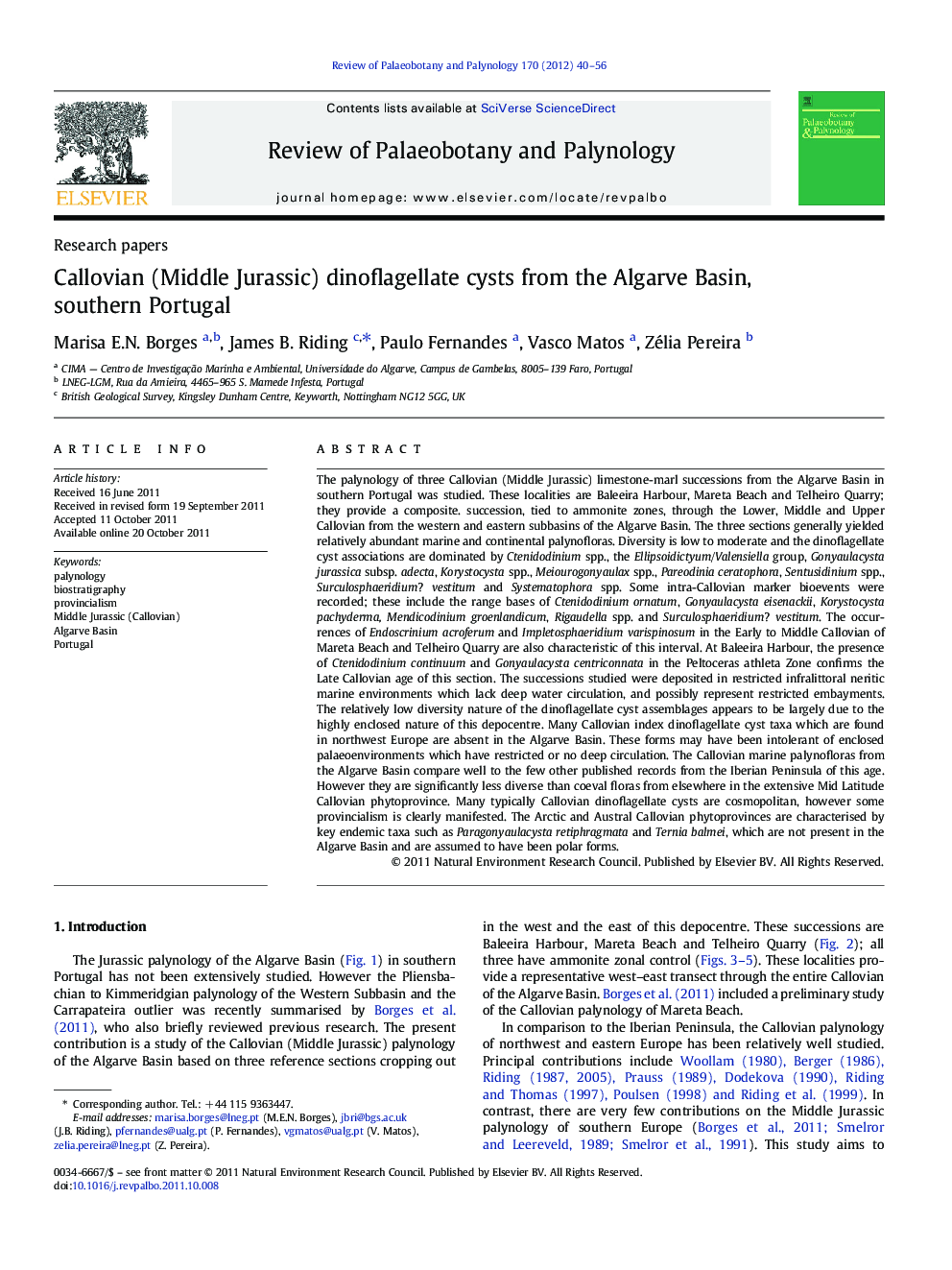| کد مقاله | کد نشریه | سال انتشار | مقاله انگلیسی | نسخه تمام متن |
|---|---|---|---|---|
| 4750734 | 1642527 | 2012 | 17 صفحه PDF | دانلود رایگان |

The palynology of three Callovian (Middle Jurassic) limestone-marl successions from the Algarve Basin in southern Portugal was studied. These localities are Baleeira Harbour, Mareta Beach and Telheiro Quarry; they provide a composite. succession, tied to ammonite zones, through the Lower, Middle and Upper Callovian from the western and eastern subbasins of the Algarve Basin. The three sections generally yielded relatively abundant marine and continental palynofloras. Diversity is low to moderate and the dinoflagellate cyst associations are dominated by Ctenidodinium spp., the Ellipsoidictyum/Valensiella group, Gonyaulacysta jurassica subsp. adecta, Korystocysta spp., Meiourogonyaulax spp., Pareodinia ceratophora, Sentusidinium spp., Surculosphaeridium? vestitum and Systematophora spp. Some intra-Callovian marker bioevents were recorded; these include the range bases of Ctenidodinium ornatum, Gonyaulacysta eisenackii, Korystocysta pachyderma, Mendicodinium groenlandicum, Rigaudella spp. and Surculosphaeridium? vestitum. The occurrences of Endoscrinium acroferum and Impletosphaeridium varispinosum in the Early to Middle Callovian of Mareta Beach and Telheiro Quarry are also characteristic of this interval. At Baleeira Harbour, the presence of Ctenidodinium continuum and Gonyaulacysta centriconnata in the Peltoceras athleta Zone confirms the Late Callovian age of this section. The successions studied were deposited in restricted infralittoral neritic marine environments which lack deep water circulation, and possibly represent restricted embayments. The relatively low diversity nature of the dinoflagellate cyst assemblages appears to be largely due to the highly enclosed nature of this depocentre. Many Callovian index dinoflagellate cyst taxa which are found in northwest Europe are absent in the Algarve Basin. These forms may have been intolerant of enclosed palaeoenvironments which have restricted or no deep circulation. The Callovian marine palynofloras from the Algarve Basin compare well to the few other published records from the Iberian Peninsula of this age. However they are significantly less diverse than coeval floras from elsewhere in the extensive Mid Latitude Callovian phytoprovince. Many typically Callovian dinoflagellate cysts are cosmopolitan, however some provincialism is clearly manifested. The Arctic and Austral Callovian phytoprovinces are characterised by key endemic taxa such as Paragonyaulacysta retiphragmata and Ternia balmei, which are not present in the Algarve Basin and are assumed to have been polar forms.
► We present a record of the Callovian palynology across the Algarve Basin.
► The dinoflagellate cysts are typical of the Callovian Stage.
► Diversity is moderate, reflecting the enclosed nature of the environment.
► Many Callovian index dinoflagellate cyst taxa are absent in the Algarve Basin.
► Three dinoflagellate cyst phytoprovinces were present in the Callovian.
Journal: Review of Palaeobotany and Palynology - Volume 170, 15 January 2012, Pages 40–56